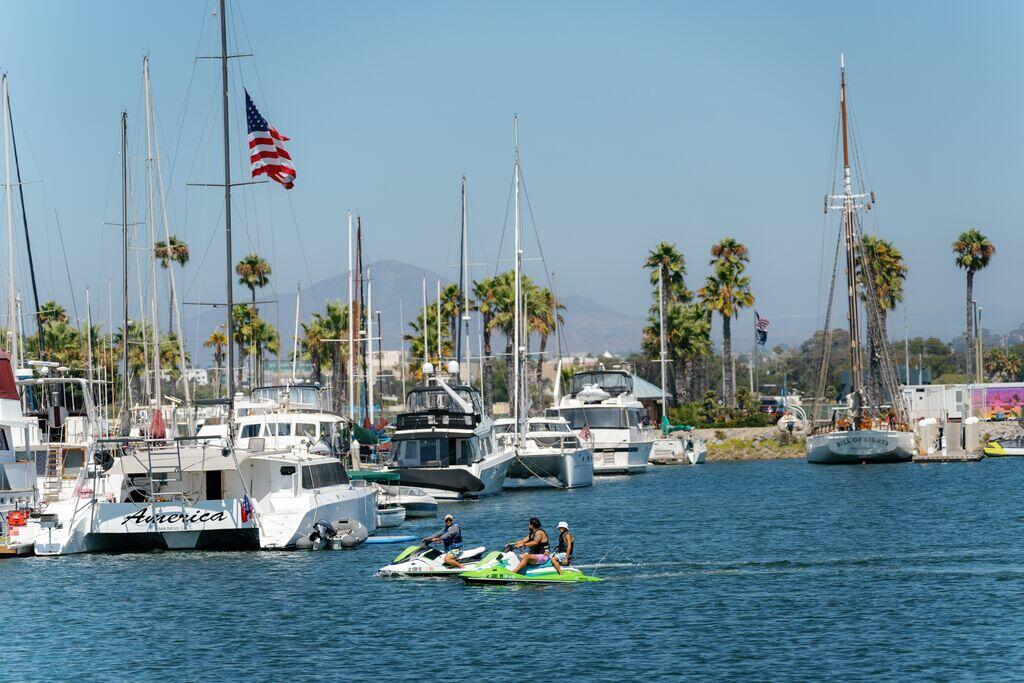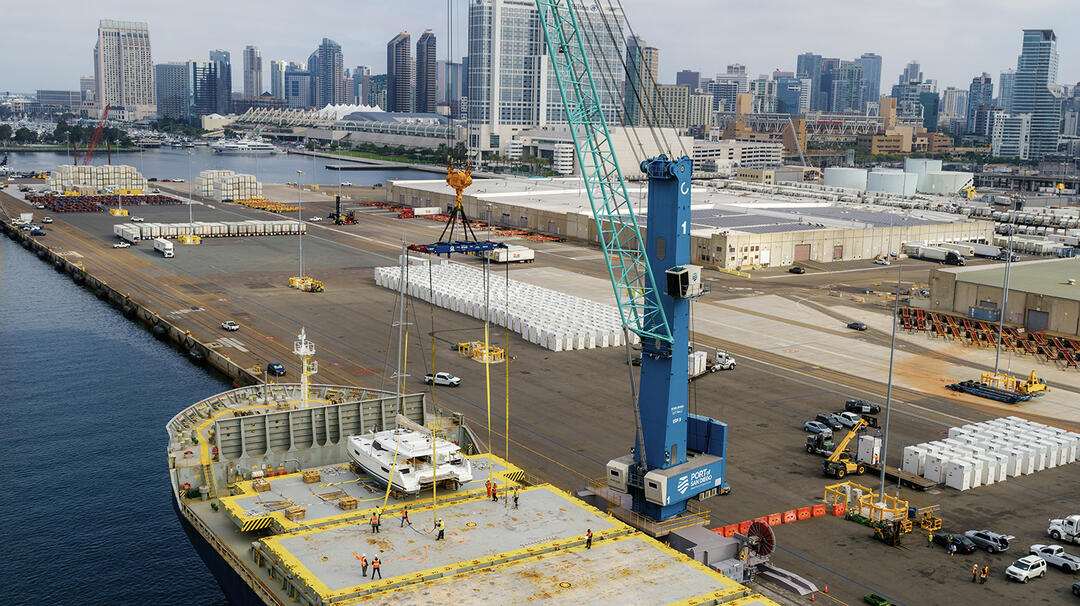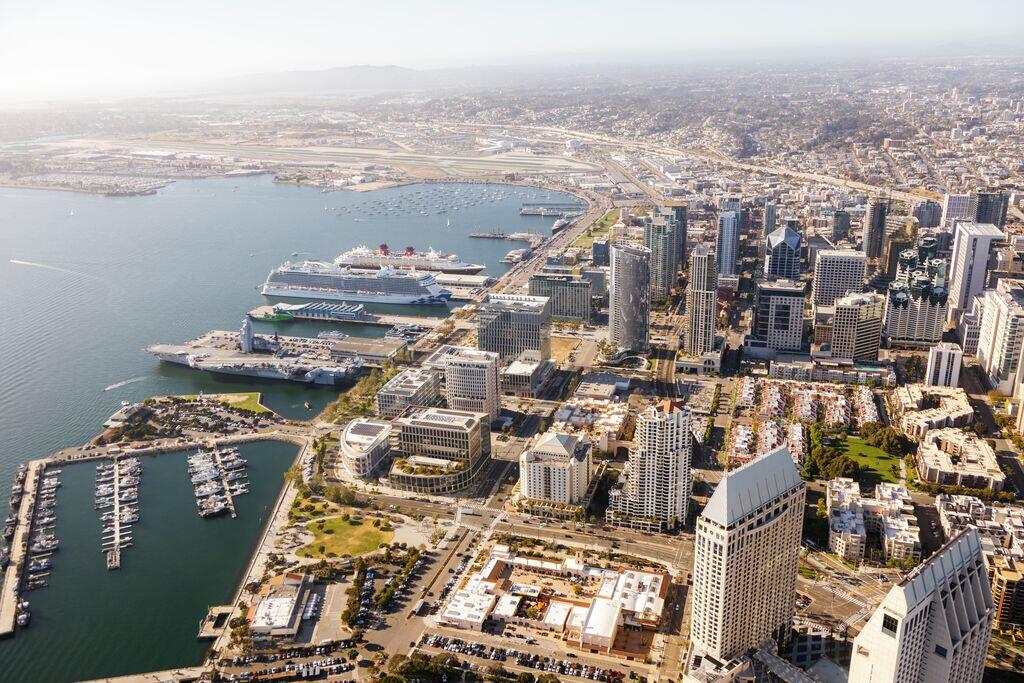A Regional Economic Engine
The Port of San Diego remains a strong economic driver for the region, adding $13.8 billion to our county’s economy in Fiscal Year 2023, a 41 percent increase from 2019.* The Port’s job growth was also strong with a 10 percent increase from 2019 to more than 71,000 total jobs supported.
Download 2023 Economic Impact Report
*For comparison purposes, the numbers are adjusted for inflation and are in 2021 dollars.
"The study’s findings underscore the Port’s resilience through the pandemic and our incredible recovery in the face of global supply chain issues, inflation, and other economic challenges." - Port Chair Danielle Moore
The Numbers in Detail
-
$13.8B in San Diego County$13.8B in San Diego County
Sectors of Interest:
- Tourism & Commercial Industry – $5.6B (40%)
- Industrial & Wholesale Industry – $3.2B (23%)
- Maritime Trade & Cargo Handling – $4.4B (32%)
- Cruise Industry – $184M (1%)
Port of San Diego – $489M (4%)
-
41,398 Direct Jobs in San Diego County41,398 Direct Jobs in San Diego County
Sectors of Interest:
- Tourism & Commercial Industry – 31,412 (76%)
- Industrial & Wholesale Industry – 7,169 (17%)
- Maritime Trade & Cargo Handling – 1,788 (4%)
- Cruise Industry – 431 (1%)
Port of San Diego – 598 (1%)
-
Jobs MultipliersJobs Multipliers
- Every direct job at the Port has a multiplier effect to create six more jobs
- 1 in 30 jobs in SD County is supported by the Port.
-
Wider ImpactsWider Impacts
Taking a wider view, the Port supported a total economic impact of $32 billion and 149,140 jobs throughout the country.
- $26.6 billion and 126,080 jobs in California.
- $25.2 billion and 121,600 jobs in the Southern California region.*
- $13.8 billion and 71,360 jobs in San Diego County.
*Southern California region refers to San Diego, Imperial, Riverside, Orange, Los Angeles, and San Bernardino Counties.
The Four Sectors
-
Maritime Trade and Cargo Handling – includes all cargo business at the Port’s two cargo terminals, the Tenth Avenue Marine Terminal and the National City Marine Terminal.
-
Industrial and Wholesale – includes shipbuilding and boat building and repair businesses as well as industrial users such as Solar Turbines and CP Kelco.
-
Cruise – includes economic activities of cruisers and crew members – hotel stays, visiting local attractions, eating in restaurants off the ship, local transportation, etc. (cruiser activities not included in the Tourism and Commercial sector to avoid double counting), as well as workers and companies that support cruise activities such as ship agents, dockworkers (stevedores), floral companies, food, maintenance, repair, etc.
-
Tourism and Commercial – includes economic activities at hotels, restaurants, retail stores, boat rental facilities, marinas, car rental agencies, commercial and sport fishing, boat tours/charters, and the San Diego Convention Center.


Additional Findings
- Tourism and commercial businesses show the strongest growth – over 40 percent more economic impact in 2023 than in 2019.
- Despite the pandemic's economic downturn, the report shows strong recovery and growth in key areas compared to pre-pandemic figures.
- Visitors to hotels along the Port’s San Diego Bay waterfront spent $2.6 billion in FY2023.
- Direct spending by the cruise industry in FY2023 totaled over $104 million.
- More than 2.4 million tons of cargo were shipped through the Port of San Diego in FY2023.
- Between FY2021 and FY2023, the total tons of cargo shipped through the Port increased by 12 percent.
Key Investments for the Future
- The Port is committed to supporting its Maritime Clean Air Strategy (MCAS) and, with various partners, has committed or invested approximately $125M to date to advance clean air projects.
- The Port is improving public access by adding, expanding, and enhancing our parks in every city around San Diego Bay.
- Special events throughout the year, like the Big Bay Boom and more, attract thousands of visitors, generate millions of dollars in sales, and promote the economic vitality of the local economy, the California economy, and beyond.
- The Port has more cargo capacity thanks to bigger cargo laydown areas at our Tenth Avenue Marine Terminal, and we can handle heavier cargo thanks to our new all-electric cranes that increase our lifting capacity from 100 metric tons to 400 metric tons – that’s the heaviest lift capacity of any U.S. West Coast port!

Key Terms
-
Direct economic impacts – refers to jobs and spending directly related to Port operations.
-
Indirect economic impacts – refers to effects resulting from the purchases of inputs to produce direct economic impacts – such as employment with companies that provide services to the Port.
-
Induced economic impacts – refers to the economic effects resulting from the re-spending of wages related to direct and indirect economic impacts.
The Port cares for 34 miles of waterfront, comprising about 14,000 acres of land and water area.
There are approximately 800 businesses located on the Port’s dynamic waterfront, including:
- San Diego Convention Center
- 2 cargo terminals
- 2 cruise terminals
- 18 major hotels and resorts
- 20 marinas and yacht clubs
- 100+ restaurants

